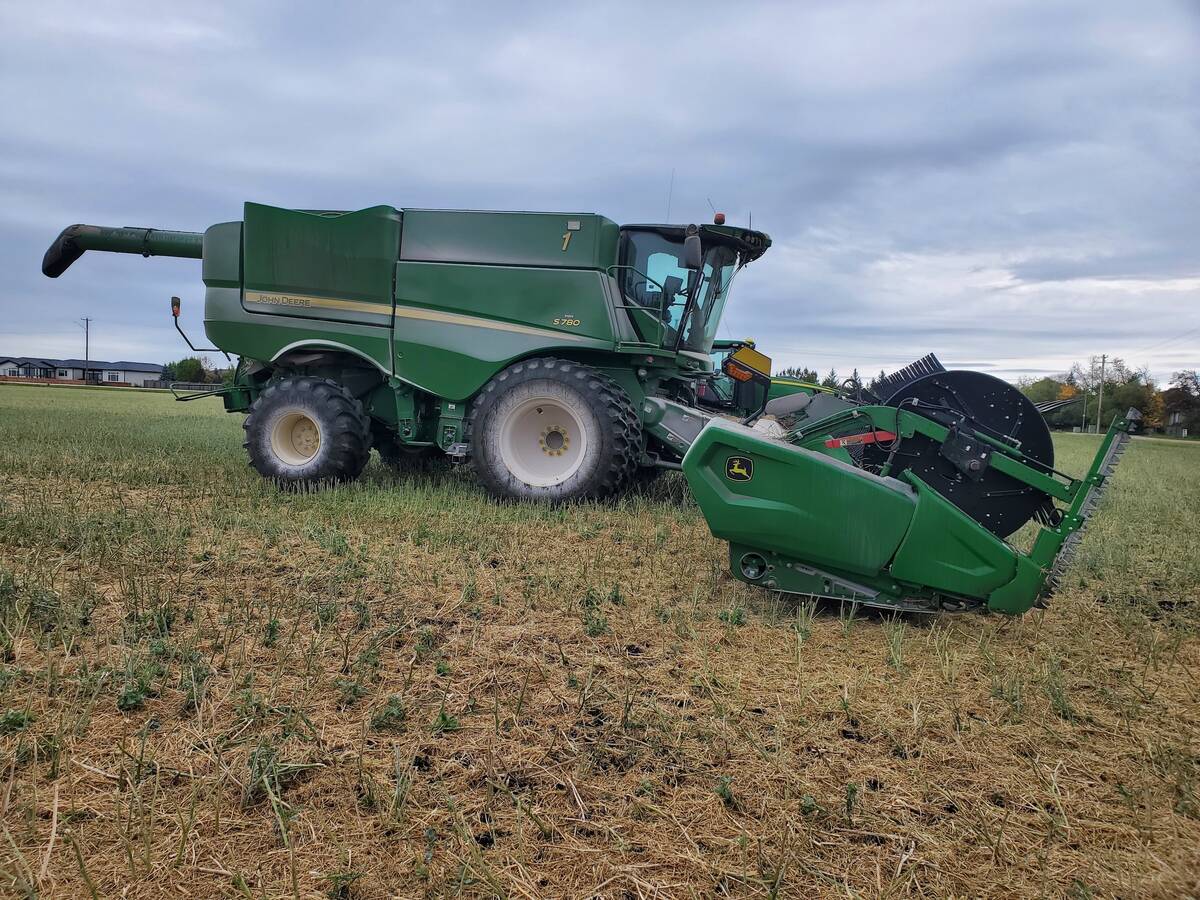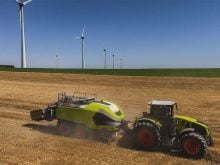Saturation of the soil by continual and excessive rainfall can cause significant loss of soil nitrogen reserves. Plants that survive in standing water or saturated soil will have little nitrogen available for them. Most of the applied nitrogen will be lost by either leaching or denitrification. Nitrate is the form of nitrogen most vulnerable.
After heavy rain, large amounts of water move down through the soil and carry nitrate-nitrogen beyond the reach of plant roots. This is called leaching.
For every 2.5 centimetres of water moving through the soil, nitrate reserves may have moved from more than seven cm in finer-textured soils to more than 15 cm in sandy soils. However, the nitrate is not completely swept downward with the leaching water. Some nitrate is held with the water in soil aggregates. In sandy soils, nitrate leaching will be more significant than in loams and clay soils.
Read Also

Powdery mildew can be combine fire risk
Dust from powdery mildew can cause fires in combines.
Denitrification of nitrates, or reduction to gaseous nitrous oxides, is the major mechanism for nitrogen loss in saturated warm soils, especially for finer-textured soils.
Denitrification losses can range from five to 15 pounds of nitrogen per day, depending on soil temperature.
Where soils have been flooded or saturated for more than four continuous days, little available nitrogen will remain in the surface soil.
A source of organic carbon is needed for microorganisms to denitrify nitrate.
Hence, nitrate leached into the subsoil will not be denitrified to the same degree as nitrate in the surface soil.
As the soil dries, some of this subsurface nitrate will rise toward the surface and into the root zone.
The amount of nitrogen that remains in the soil depends on when the nitrogen was applied.
The best way to determine how much available nitrogen remains in the soil is to collect samples and have them analyzed by a soil testing lab.
For a typical pre-sidedress nitrate test (PSNT), collect 15 to 20 soil cores to a depth of 30 cm from representative field areas. Because some available nitrogen may remain in the subsurface soil, collect an additional sample from the 30-60 cm depth.
In fields where anhydrous ammonia was knifed in prior to planting, collect 25 to 30 cores to get a better indication of the overall available nitrogen status.
Samples should be dried and mixed as quickly as possible before sending them to a lab for analysis.
Most commercial soil testing labs provide soil nitrogen testing and are able to provide results within 48 hours of receiving the sample.
When you receive your nitrate testing data, keep in mind that for a regular PSNT sample, different labs may determines the nitrogen credit in different ways.
Montana State University arrives at a value by multiplying the parts per million of nitrate-nitrogen by six to obtain a credit in pounds of nitrogen per acre. The factor of six is based on the amount of nitrate measured in the top 30 cm of soil plus an assumption that the amount of nitrate in the second 30 cm is two-thirds of the amount in the top 30 cm.
This relationship was developed after sampling many fields over several years. Other areas with different conditions may use different formulas depending on moisture reserves, soil types and other factors.
In most areas, crops are still relatively small and have accumulated only a minor portion of the nitrogen needed.
If you applied all or most of your nitrogen at or before planting, you may want to consider sidedressing nitrogen to compensate for losses.
The amount to sidedress nitrogen should equal your planned nitrogen rate minus the amount of nitrogen measured by the soil test.
For example, if you applied 100 lb of nitrogen per acre before planting and have 36 lb of nitrogen per acre remaining in the soil after testing, a sidedressing of 64 lb per acre might be warranted depending on the growth stage of the crop.
Nitrogen can be broadcast by land or plane or knifed in once the soil dries out. Knifing or broadcast with cultivation may also provide the benefit of loosening and aerating the soil but could cause some crop damage during application.
















